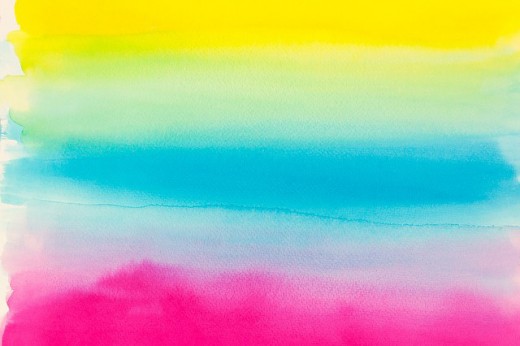Painting with Acrylics - Landscaping or Portraits
Acrylic Paints

Acrylic Paints are Versatile
Acrylics will open a world of realism, abstract, fantasy, and much more while painting people, animals, plants, architecture, landscaping. In other words, wherever your interests takes you, acrylics can help you to accomplish painting these images on any desired surface. Acrylic paints create watercolor, acrylic, and oil painting effects.
Layering Acrylic Paints

Acrylic Painting
Layering your paints on the work surface is very important to the finished product as it will add a more dimensional and richer texture to your painting. Make any necessary adjustments or surface preparation of the working surface. Then choose to pencil, pen, or paint a sketch.
My personal preference for sketching is a combination of both pencil and paint. Use a very light pencil because depending on the chosen tint it may require much layering to hide the pencil marks especially if lighter shades of color are used.
Background Brush Stroke

Prime and Layer Work Surface
Prepare the chosen surface (paper, canvas, glass, wood, cloth, plastic, clay, etc.) with the appropriate primer to receive acrylic paints. Layer colors of watered down acrylic paint as outlined in your sketch. After being certain that these are the colors you wish to work with keep layering your paint until they give the texture and depth that you need to enhance your masterpiece.
Layering can be done horizontally, vertically, or overall. The layering preparation is dependent on the creation which is in your mind and later to be sketched on the canvas.
Use different tools to layer. Brushes are common usage. Try sponges, a piece of cloth, a spatula, or a wooden or plastic knife. Use your imagination to apply paint for creating a flat, fluffy, or ridged surface. Think about the texture as to how it will enhance detailed work.
Portrait of a Young Girl

Benefits of Painting the Background
It truly matters that your background is painted.
- It helps as a guideline for your foundation colors, depth, texture, and richness of the finished masterpiece.
- Preparation of your work surface and painting the background will help to avoid white paper or canvas peek-a-boos leaking through the work.
- Painting the background sets the bonding agents of the foundation and the paints to adhere tightly together and prevent tint fade outs or chipping paint.
- It is very difficult to paint the background after the details have been completed. There will always be an outline of bare paper or canvas showing around the details. The details will appear to recede into the background rather than being displayed in their natural order. Always paint starting with the background and work forward.
Bird of Paradise Painting

Surface Preparation for Acrylic Painting
The details of the Bird of Paradise painting would have a stronger showing if the background had been painted. This is a common error for those who wish to start painting the object in mind and are not concerned about the background. Slow down and take time to prepare the background for your paintings.
Having said that, and since I am the artist who painted this flower. The background was not prepared because the intent of the flower is to be copied and placed on fabric for a quilting project. There are many craft projects which may be considered for your art masterpieces.
Layering Highlights

Layering and Blending Acryics
Layering is the application of paint on paint. Blending is pleasantly combining colors by overlapping.
Both landscaping and portrait paintings use the same techniques for either choice. For example, layering a road in a landscape is the same method which is used to layer a blouse in a portrait. Blending techniques will also be the same.
Blending clouds into a blue sky is no different than blending blush on a woman's cheek onto the face foundation.
Practice will be needed to experience adding water to the paint or misting the work surface as two possible choices for blending. Wet on wet technique is best for blending.
The choice of creating landscapes versus portraits is a personal choice.
Landscape Transparency

Transparency Technique
Landscaping and portraits use layering, blending and transparency techniques.
In landscaping one associates transparency with a body of water, falling rain, or a misty forest scene. A popular example of misting are when the sky, trees, and a body of water are covered with an early morning mist.
Creating the transparency layers of paint has its fun moments when you see how the colors change.
White does not have to be the chosen color for creating transparency. Experiment with different colors and note the magical changes when the paints overlap each other. Experiment with wet on wet and dry techniques.








